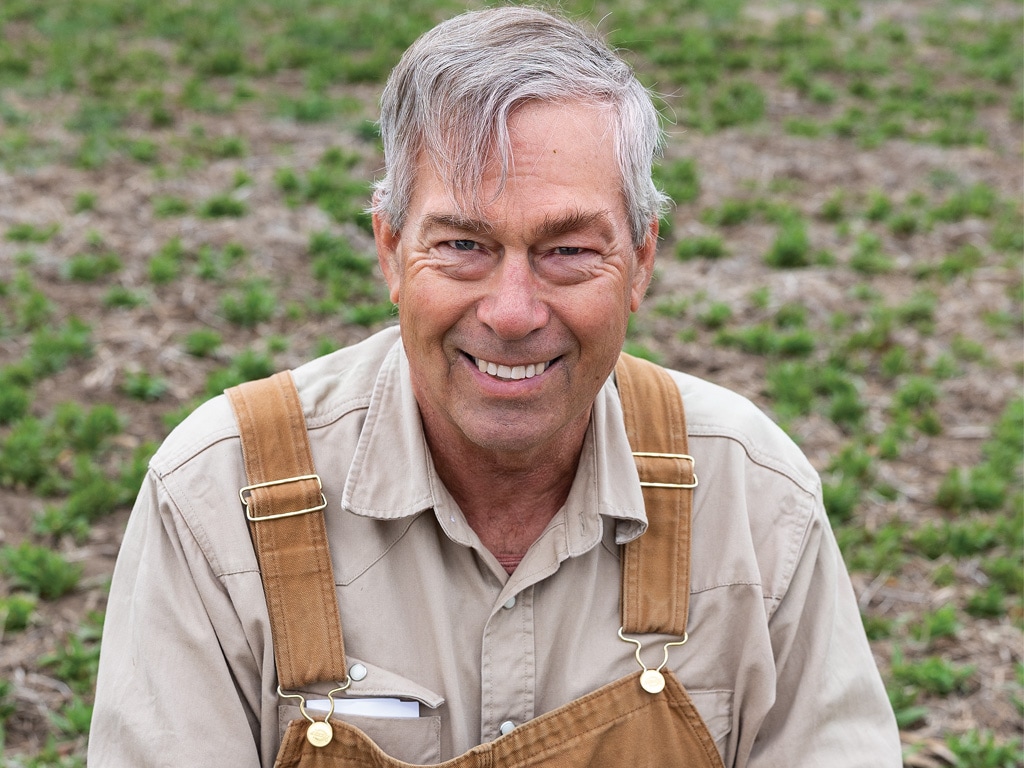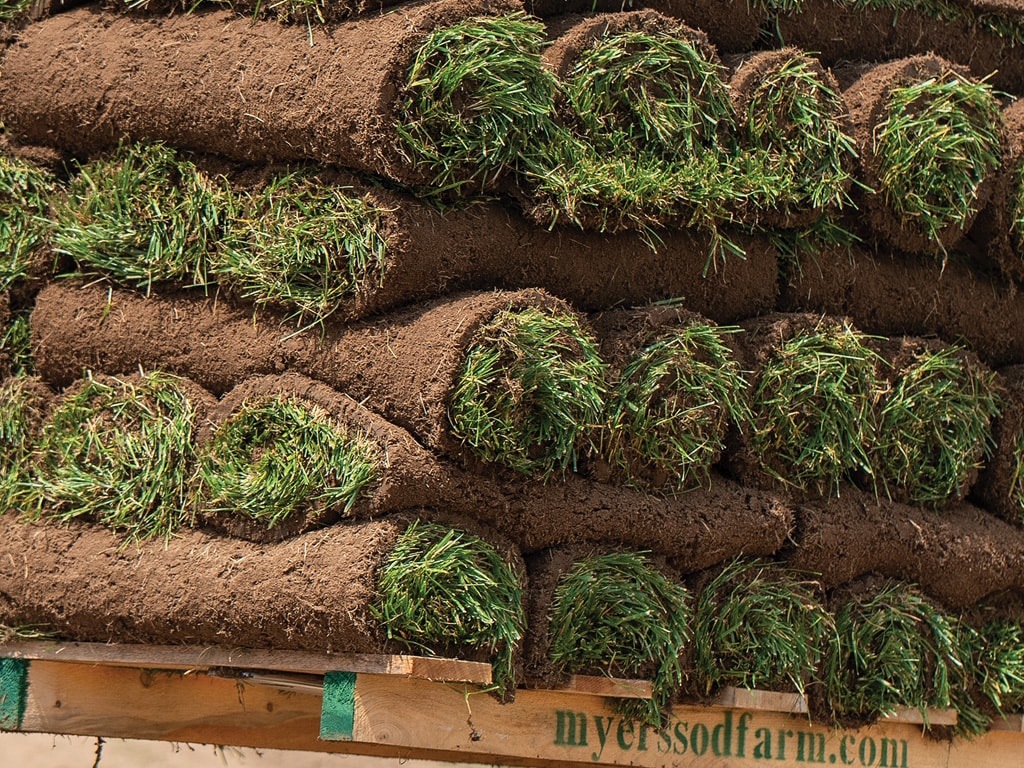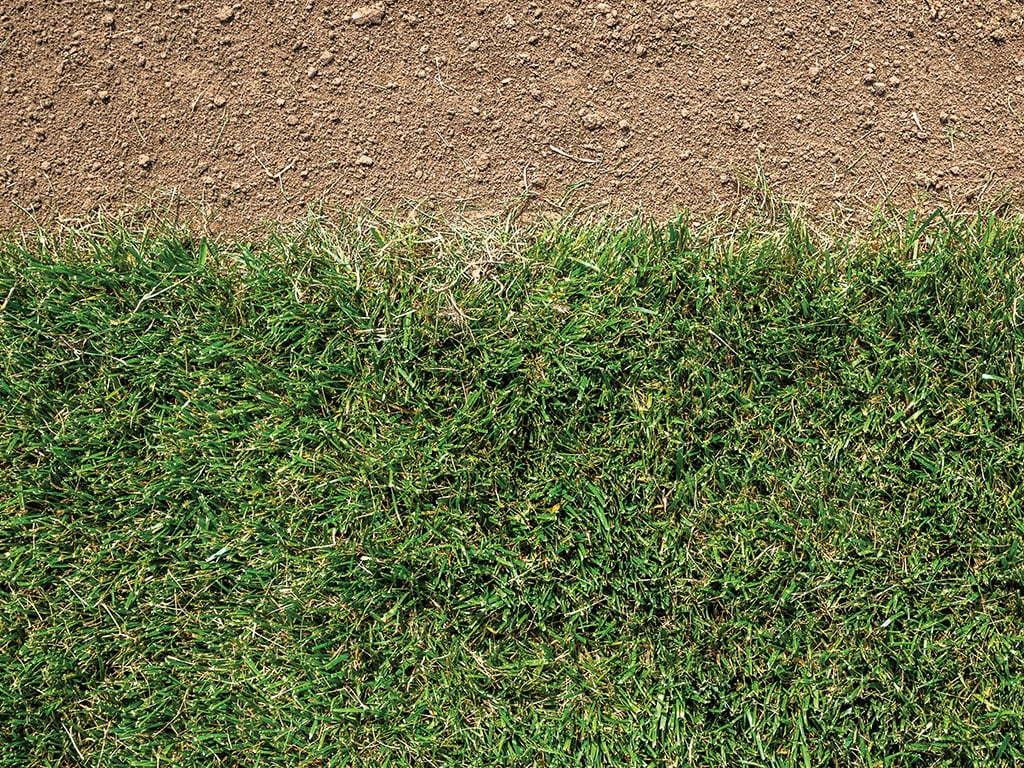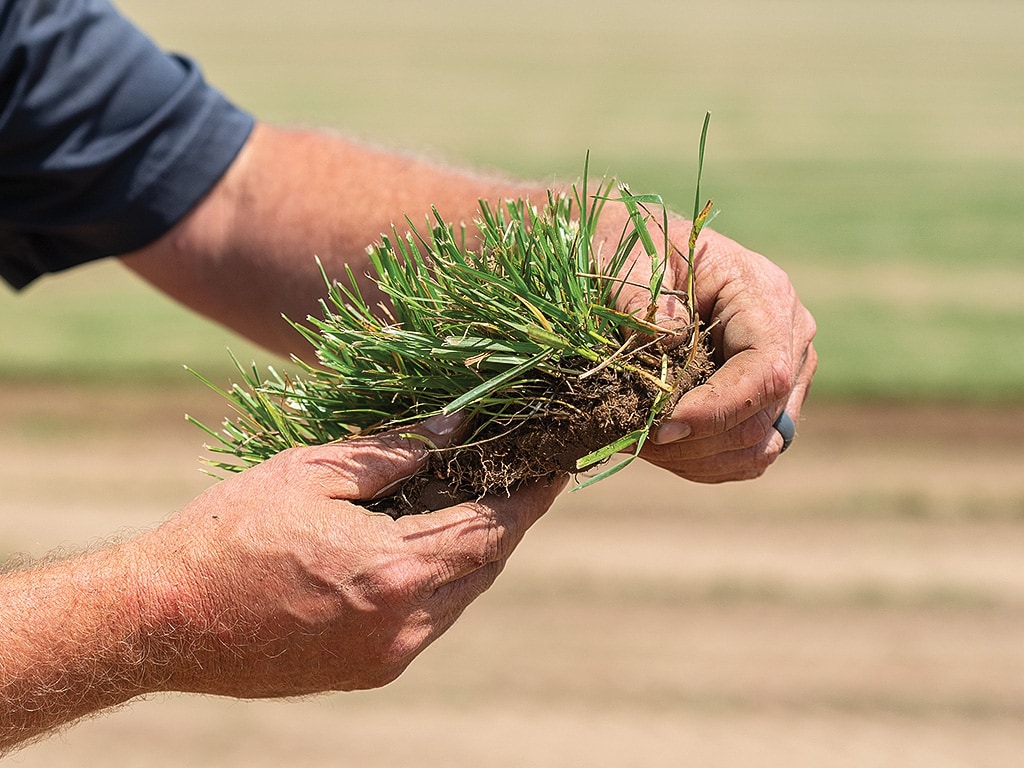Agriculture, Farm Operation November 01, 2024
Going Against the Grain
First generation farmer finds footing with sod.
by Katie Knapp
"I was the kid who wanted to farm but whose dad didn't farm," explains Adam Myers, who now farms about 4,000 acres in southern Indiana.
He worked for a farmer in high school and thought a corporate job in ag engineering after college would suffice. But, he quickly realized cubicle life was not for him and switched his major at Purdue University to ag systems management.
"I need to be dirty," Myers joked while giving a windshield tour of his farm 20 years after his first harvest.
When Myers was getting started, corn was hovering around $2 and beans around $5. All the neighbors discouraged him from following their footsteps, but he didn't want to follow his father's either, who managed a large gas station chain at the time.
He saved earnings from mowing yards and working on other farms to be able to buy his first 12 acres. He recalls the farmer who sold him the ground telling him, "I know you are going to do something unique with it."
That's when the idea to grow grass was planted.
"I remember driving by a sod farm near Lafayette and then asking landscapers [near his hometown of Seymour, Ind.] if they would buy local sod," Myers says. "After they said yes, my dad and I went to buy equipment from a sod farm near Chicago. I couldn't help but notice how much more optimistic they were than row crop farmers at home."
At the time there were only 38 sod farms in the state of Indiana and about 2,000 farms across the United States, according to USDA National Agricultural Statistics Service (NASS) data.
In 2004, Myers sold his first sod to local landscapers, some of which are still his customers today. Little by little, he kept buying and renting more land as his customer list grew. He now serves residential, commercial, road construction, and university and professional sports programs from Florida to South Dakota.
"We seed the fields in the fall and hope we've forecast well enough to not run out before the next fall," he explains.
The Kentucky bluegrass and turf-type tall fescue he raises does well in rotation with corn, soybeans, wheat, and canning tomatoes. In 2024, he and his team raised about 1,100 acres of sod and about 3,000 acres of rotational crops.
The idea of farming for Myers is not about the generational farmstead. It is about being outside, growing something every day.
Seeing his sod go in as the finishing touch on projects is very gratifying, he says. "Probably the coolest project was doing the Miami Marlins' baseball field. Incidentally, that was the same day as my wedding, so I didn't actually get to see it."
Above. Myers purchased his first 12-acre field with money earned from mowing yards and working as a hired hand. A chance drive-by of a sod farm gave him an idea to plant grass on that field. Today he raises more than 1,000 acres annually for anything from a residential yard to a major league baseball field.
No fear. Looking back, timing for Myers to dig in as a first-generation farmer could not have been better.
The market was favorable for him to buy land at a fraction of the price it is worth now and at a relatively low interest rate. He also didn't have contracts with large housing developers yet when that market crashed in 2008.
But, he says that shouldn't discourage anyone who really wants to farm from doing it today.
He knows he would have built a successful operation no matter the timing or market factors because he believes, "where there is a will, there is a way, and I wasn't scared of anything back then."
To get where he is today has taken a lot of work, overhead investment, and help. Purdue University Extension reported in 2021 that labor accounts for 52% of the investment in raising sod.
"When I started, it was me and some buddies doing it all on the weekends. Eventually I was working on the farm all day and would take a load of sod to Indianapolis after dark. Then, I would do it all over again the next day, six days a week," he says.
Now that he is married with three children and has a staff of more than 20 people, he is working hard to organize the business so that everyone, including himself, can have a better work-life balance.
"I am finally starting to wrap my head around the fact that not everyone wants to work as hard and long as I do," he says lightheartedly.
Because hiring enough good people is increasingly more challenging, his next investment is in autonomous mowing tractors.
"You can imagine how long it takes to mow 1,000 acres at least every five days, even with 36-foot mowers," he says. "Autonomous tractors will help a lot." ‡
Read More

AGRICULTURE, EDUCATION
Camelina Connection
This tiny oilseed crop can be a boon to renewable fuels.

AGRICULTURE, FARM OPERATION
Prevailing With Pintos
Branding a commodity keeps beans in the rotation.





